How to connect navicat to mysql
How to connect navicat to mysql: First open the Navicat software, find the "Connect" menu and select "MySQL"; then enter the connection name and enter the corresponding information; then click the save button; finally double-click the "test" menu. Can.
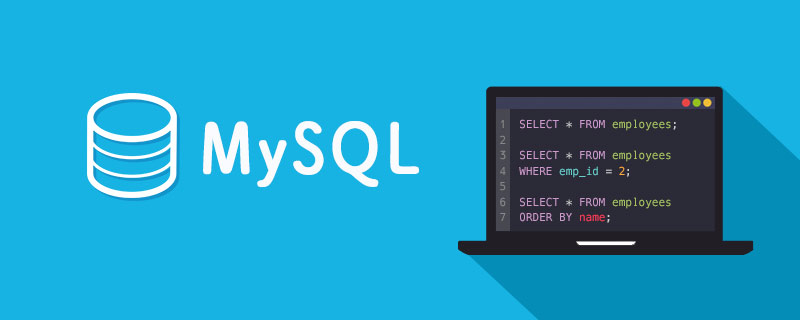
The operating environment of this tutorial: windows7 system, navicat&&mysql version 8.0.22, DELL G3 computer. This method is suitable for all brands of computers.
Related free learning recommendations: mysql video tutorial
How to connect navicat to mysql:
1. First choice, open Navicat software, find the "Connect" menu in the interface and click it. In the pop-up menu, select "MySQL", and the same applies to other databases.
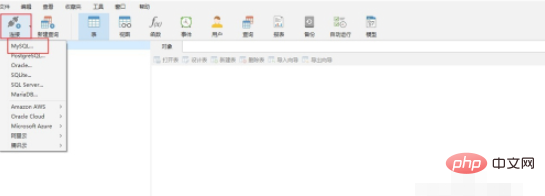
#2. In the new interface that pops up, enter the connection name. This connection name is for the convenience of recording which server it is. You can name it yourself. Enter the host, which is the server address of mysql. Input port: MySQL server port. Enter username and password.
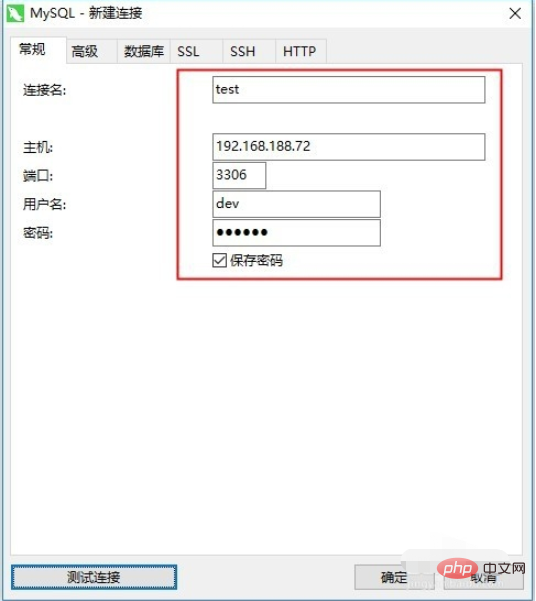
3. In the second step, if you are worried that the information you entered is incorrect, you can use the "Test Connection" in the lower left corner. This place is mainly for testing the database. Whether the connection is successful, if not, the corresponding information will be prompted, and then the corresponding information will be modified according to the prompt information.
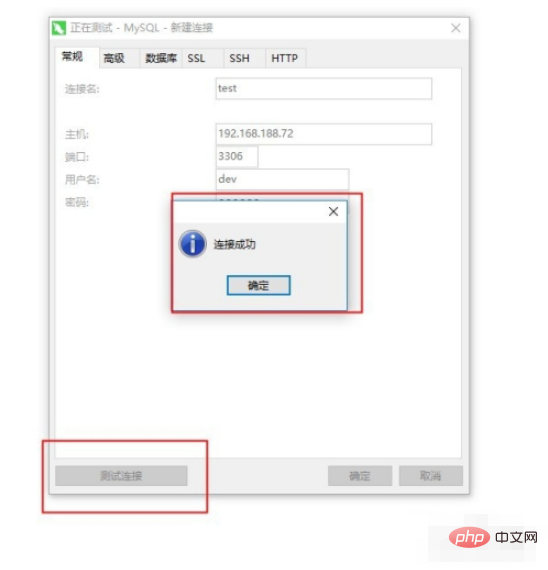
#4. After ensuring that there are no problems with the above information, click the "Save" button. At this time, the operation interface will disappear. At the same time, a "test" menu can be added to the left list of the main interface. This menu is the MySQL link just added.
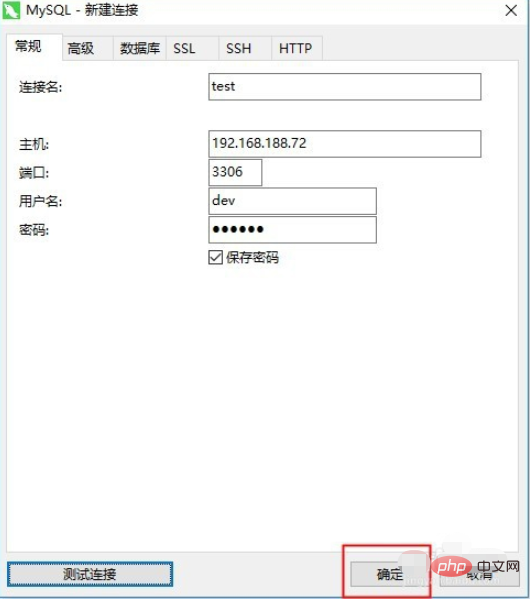
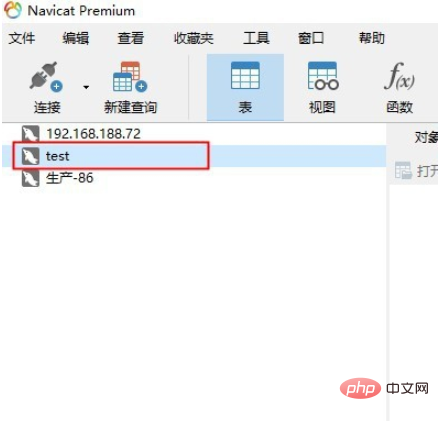
5. Double-click the "test" menu on the left to connect to the MySQL server. After connecting, you can perform various operations on different databases.
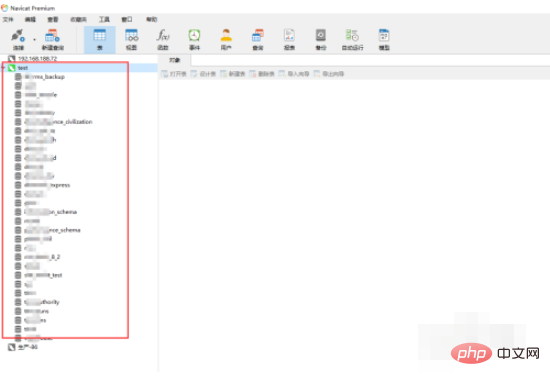
The above is the detailed content of How to connect navicat to mysql. For more information, please follow other related articles on the PHP Chinese website!

Hot AI Tools

Undresser.AI Undress
AI-powered app for creating realistic nude photos

AI Clothes Remover
Online AI tool for removing clothes from photos.

Undress AI Tool
Undress images for free

Clothoff.io
AI clothes remover

AI Hentai Generator
Generate AI Hentai for free.

Hot Article

Hot Tools

Notepad++7.3.1
Easy-to-use and free code editor

SublimeText3 Chinese version
Chinese version, very easy to use

Zend Studio 13.0.1
Powerful PHP integrated development environment

Dreamweaver CS6
Visual web development tools

SublimeText3 Mac version
God-level code editing software (SublimeText3)

Hot Topics
 How to adjust the interface font size in navicat
Apr 24, 2024 pm 04:24 PM
How to adjust the interface font size in navicat
Apr 24, 2024 pm 04:24 PM
Steps to adjust interface font size in Navicat: Enter the required database connection. Click the Tools menu. Select "Options". Select the Environment tab. Under User Interface Settings, find the Font Size setting. Select the desired font size and click OK.
 How to export the er diagram of navicat
Apr 24, 2024 pm 04:21 PM
How to export the er diagram of navicat
Apr 24, 2024 pm 04:21 PM
The steps to export an ER diagram in Navicat are: 1. Open the ER diagram pane; 2. Connect to the database; 3. Export the ER diagram. The exported ER diagram is saved as an image file, showing the entities, relationships, and properties of the database.
 Where is the navicat cache file?
Apr 24, 2024 pm 06:06 PM
Where is the navicat cache file?
Apr 24, 2024 pm 06:06 PM
Navicat cache file storage location: Windows: %APPDATA%\PremiumSoft\Navicat\Cache; Mac: /Users/[username]/Library/Application Support/PremiumSoft/Navicat/Cache. Cache file types: .ncache, .ncache2, .ncache3. Purpose: Store recently opened connections, query history and DBMS metadata. Clear cache files: After closing Navicat, delete the corresponding files in the above location, and then restart Navicat.
 How to copy database to another database in navicat
Apr 24, 2024 pm 07:24 PM
How to copy database to another database in navicat
Apr 24, 2024 pm 07:24 PM
Steps to copy a database using Navicat: Connect the source and target databases. Select the database objects (tables, views, stored procedures) to be copied. Right-click the object and select Copy Database Object. Select the target database and customize replication options (data copy, rename tables, discard constraints). Click "Start" to perform the copy. Check the replication results in the target database to verify the correctness of data and constraints.
 How to recover accidentally deleted table in navicat
Apr 24, 2024 pm 06:21 PM
How to recover accidentally deleted table in navicat
Apr 24, 2024 pm 06:21 PM
Navicat accidentally deleted table recovery method: Check whether there is an accidentally deleted table in the recycle bin and restore it. Use binary log recovery: open the binary log, find the start and stop positions, recover the table from the binary log file and import it back to the database. Use a third-party backup tool to back up your database regularly, allowing recovery in the event of accidental deletion.
 How to export table structure to word using navicat
Apr 24, 2024 pm 07:57 PM
How to export table structure to word using navicat
Apr 24, 2024 pm 07:57 PM
To export a table structure to Word in Navicat: Select the table to export. Select the Export Wizard and select Word format. Custom export options (including table headers, single table export, and merged files). Select the output file location and name. Export and open the file to view the table structure including table names, column names, data types, constraints, and more.
 How to undo the previous step in navicat
Apr 24, 2024 pm 05:48 PM
How to undo the previous step in navicat
Apr 24, 2024 pm 05:48 PM
Navicat can undo the previous operation. The specific steps are as follows: Open Navicat and connect to the database. Perform the action you want to undo. Click the Undo button under the Edit menu in the menu bar (or use the shortcut Ctrl+Z/Cmd+Z). Confirm the undo operation.
 Which one is easier to use, navicat or datagrip?
Apr 24, 2024 pm 07:15 PM
Which one is easier to use, navicat or datagrip?
Apr 24, 2024 pm 07:15 PM
Navicat and DataGrip are two database management tools that have their own advantages and disadvantages in terms of functionality. Navicat has an intuitive user interface, powerful backup and recovery capabilities, and excellent performance, but the data modeling tool is too simple and lacks collaboration capabilities. DataGrip has powerful query analysis capabilities, comprehensive database management capabilities, and collaboration support, but it has a complex user interface, low performance, and only supports Windows and MacOS. Therefore, Navicat is suitable for individual users and those who value intuitiveness and performance, while DataGrip is more suitable for those who require collaboration capabilities, powerful query analysis and comprehensive database management.






